| |
As you may recall, the story Penguin and the Fig Tree takes place on a beach.
When you think of a beach, you see a large expanse of sand where then the sea begins, don't you? And did you know that there are beaches with large sand dunes where plants and shrubs grow?
Dunes are formed by the deposit of sand, brought by the wind or even the sea, and their vegetation is different from the flowers and shrubs that you can have in your garden.
The dune vegetation is creeping, dispersed and not very varied; but in some places there are even a href="../../TEMAS/PT/arvores_pt.html#item_pine">pine trees that have adapted very well and even help to fix the sands.
This is the case of a very old pine forest in Portugal: the Pinhal de Leiria. The highest dune in Europe is the Pilat Dune in France.
Both beach and desert sand can be of different colours, such as white, yellow, brown, orange and even black. The colour of the sand depends on the colour of the rocks it weathered from through erosion.
For example, in the desert the sand is more orange, while in the volcanic areas it is almost black.

White sand desert in New Mexico |
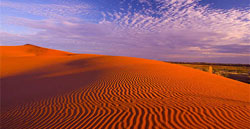
Simpson desert red sand, Australia |
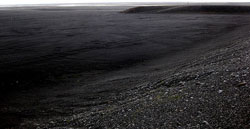
Black sand of Sandar arctic desert, Iceland |
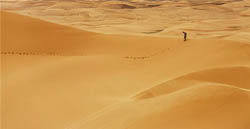
Yellow sand of the Gobi desert, China and Mongolia |
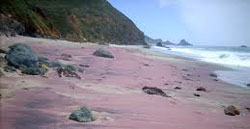
Lilac sand at Pfeiffer Beach, CA, USA |
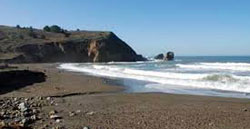
Chocolate sand on Rockaway Beach, CA, USA |
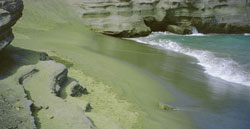
Green sand beach in Hawaii |
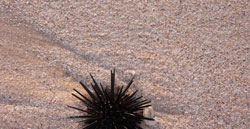
Pink sand beach, Eleuthera island, Bahamas |
|
The beach dunes and the vast sandy areas that form the deserts are some of the landscapes that characterize the Earth's surface. But you are certainly familiar with other types of landscape,
such as the mountainous regions of northern Portugal, the extensive plains of Alentejo, the vineyards covered slopes of the Douro, small rural villages or urban centres.
The different aspects of regions result from the combination of physical elements (mountains, rivers, deserts, sea) and human elements (farming, villages, cities).
The regions where the action of Man is still not very visible are called natural landscapes, as opposed to those that show obvious signs of Man's acion, which are called humanized landscapes.
|
|




